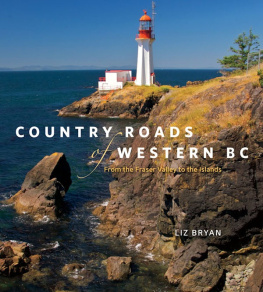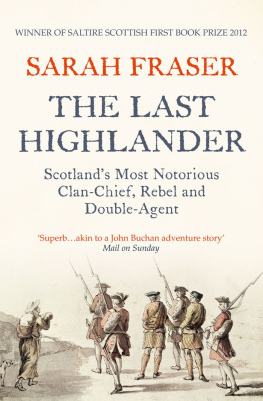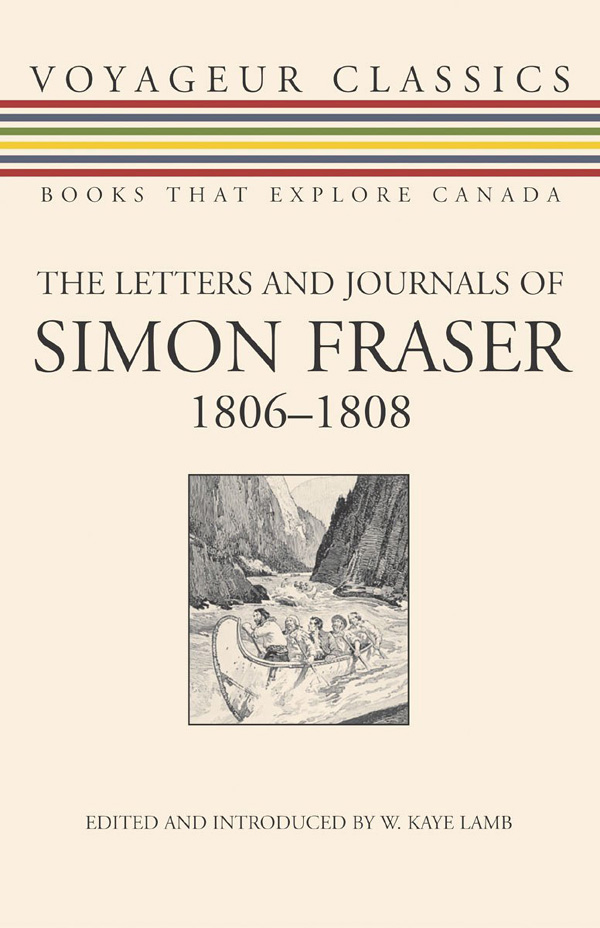VOYAGEUR CLASSICS
BOOKS THAT EXPLORE CANADA
Michael Gnarowski Series Editor
The Dundurn Group presents the Voyageur Classics series, building on the tradition of exploration and rediscovery and bringing forward time-tested writing about the Canadian experience in all its varieties.
This series of original or translated works in the fields of literature, history, politics, and biography has been gathered to enrich and illuminate our understanding of a multi-faceted Canada. Through straightforward, knowledgeable, and reader-friendly introductions the Voyageur Classics series provides context and accessibility while breathing new life into these timeless Canadian masterpieces.
The Voyageur Classics series was designed with the widest possible readership in mind and sees a place for itself with the interested reader as well as in the classroom. Physically attractive and reset in a contemporary format, these books aim at an enlivened and updated sense of Canadas written heritage.
VOYAGEUR CLASSICS
BOOKS THAT EXPLORE CANADA
THE LETTERS AND JOURNALS OF
SIMON FRASER
18061808
EDITED AND INTRODUCED BY W. KAYE LAMB
FOREWORD BY MICHAEL GNAROWSKI

Copyright Dundurn Press, 2007
Originally published in 1960 by Macmillan of Canada as one of a series called Pioneer Books
All rights reserved. No part of this publication may be reproduced, stored in a retrieval system, or transmitted in any form or by any means, electronic, mechanical, photocopying, recording, or otherwise (except for brief passages for purposes of review) without the prior permission of Dundurn Press. Permission to photocopy should be requested from Access Copyright.
Editor: Michael Carrroll
Proofreaders: Marja Appleford and Allison Hirst
Design: Jennifer Scott
Printer: Webcom
Library and Archives Canada Cataloguing in Publication
Fraser, Simon, 1776-1862.
The letters and journals of Simon Fraser, 1806-1808 / edited and introduced by W. Kaye Lamb.
(Voyageur classics)
Includes bibliographical references and index.
ISBN 978-1-55002-713-6
1. Fraser, Simon, 1776-1862TravelBritish ColumbiaFraser River. 2. Fraser River (B.C.) Description and travel. 3. British Columbia Discovery and exploration. I. Lamb, W. Kaye (William Kaye), 1904- II. Title. III. Series.
FC3212.1.F73A3 2007 971.1302 C2007-902100-X
1 2 3 4 5 11 10 09 08 07

We acknowledge the support of the Canada Council for the Arts and the Ontario Arts Council for our publishing program. We also acknowledge the financial support of the Government of Canada through the Book Publishing Industry Development Program and The Association for the Export of Canadian Books, and the Government of Ontario through the Ontario Book Publishers Tax Credit program, and the Ontario Media Development Corporation.
The Dundurn Group and Michael Gnarowski wish to express their thanks to Mrs. Elizabeth Hawkins, executor of the estate of Dr. W. Kaye Lamb, for permission to reissue Dr. Lambs edition of Simon Frasers letters and journals.
Care has been taken to trace the ownership of copyright material used in this book. The author and the publisher welcome any information enabling them to rectify any references or credits in subsequent editions.
J. Kirk Howard, President
Printed and bound in Canada.
Printed on recycled paper.
www.dundurn.com
Dundurn Press 3 Church Street, Suite 500 Toronto, Ontario, Canada M5E 1M2 | Gazelle Book Services Limited White Cross Mills High Town, Lancaster, England LA1 4XS | Dundurn Press 2250 Military Road Tonawanda, NY U.S.A. 14150 |
CONTENTS
From the original manuscript in the Toronto Public Library
From the transcript in the Bancroft Library, University of California
From the transcript in the Bancroft Library, University of California
From transcripts in the Bancroft Library, University of California, and from manuscripts in the Archives of British Columbia
THE LETTERS AND JOURNALS OF
SIMON FRASER
18061808
FOREWORD
Tucked away in southeastern Ontario, in a Scottish corner of the province now known only to its inhabitants and to those Macs who with kilts and pipes gather every year for the Highland Games in Maxville, lie the small towns and villages from which went forth and to which returned Duncan Cameron, John McGillivray, Hugh McGillis, and David Thompson men whose intrepid exploring and canny factoring in the great west and northwest of this country stitched Canada together. They came to Glengarry County and left their imprint on villages and hamlets with names like Dalkeith, Dunvegan, Apple Hill, Williamstown, and St. Andrews. The stone fences laboriously piled by generations tell todays traveller that it is not the best of land, but the Scots endured; some farmed, and some went into the fur trade, seemingly thinking little of the back-breaking voyages between Montreal and points west Athabasca, the North Saskatchewan River, Michilimackinac, and the Columbia. All but forgotten now, these mens bones lie in small village graveyards, the headstones leaning this way and that, their legends barely decipherable, blackened and time-worn.

St. Andrews Roman Catholic Church, built in 1861, where Simon Fraser is believed to have been buried.
Simon Fraser (17761862) lies in a tiny triangle of tended land between the highway and the Raisin River, across the road from the rounded walls of the oldest field stone structure in Ontario, which was built around 1801 to serve the Roman Catholic Highlanders. Raised under the leadership of Spanish John Macdonnell and the Reverend Roderick Macdonnell, with contributions from the local citizenry as well as members of the Montreal-based fur trading North West Company, it had its un-ecclesiastical moment as a field hospital during the War of 1812. Fraser shares the small country cemetery with some thirty or forty settlers of his time, among whom is Sandfield Macdonald. There is a log replica of the first Catholic church built by the earliest settlers, many of whom were Loyalists who had crossed into Canada after the American Revolution to take up land in the region in the late years of the eighteenth century. The original headstone that marked the resting place of Fraser and his wife has been replaced by a more modern monument, which looks, perhaps, slightly out of place beside its modest neighbours.

Front and rear views of the oldest surviving stone structure, originally a Roman Catholic church, circa 1801, across the road from Simon Frasers burial place.




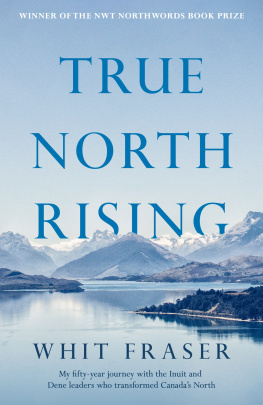
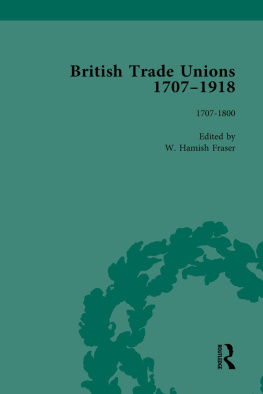
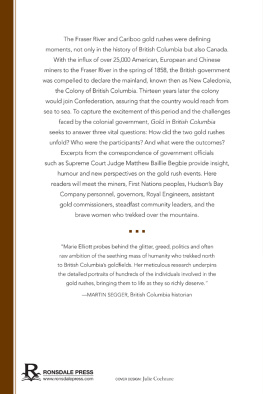

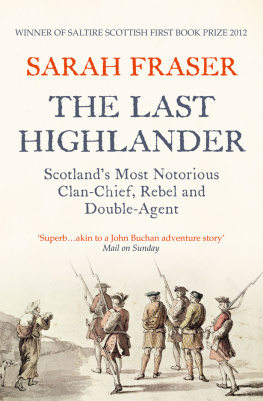
![Jeremy G. Venditti - Coherent flow structures at Earths surface [derives from a conference held at Simon Fraser University, Burnaby, British Columbia, Canada, 3-5 August 2011]](/uploads/posts/book/194074/thumbs/jeremy-g-venditti-coherent-flow-structures-at.jpg)
